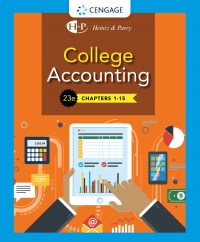













The equity sections for Atticus Group at the beginning of the year (January 1) and end of the year (December 31) follow. Stockholders' Equity January 1 Common stock-$4 par value, 100,000 shares authorized, 40,000 shares issued and outstanding Paid-in capital in excess of par value, common stock Retained earnings Total stockholders' equity $ 160,000 120,000 320,000 $ 600,000 Stockholders' Equity (December 31) Common stock-$4 par value, 100,000 shares authorized, 47, 400 shares issued, 3,000 shares in treasury Paid-in capital in excess of par value, common stock Retained earnings ($30,000 restricted by treasury stock) $189,600 179,200 400,000 768,800 (30,000) $738,800 Less cost of treasury stock Total stockholders' equity The following transactions and events affected its equity during the year. Jan. 5 Declared a $0.50 per share cash dividend, payable on January 10. Mar. 20 Purchased treasury stock for cash. Apr. 5 Declared a $0.50 per share cash dividend, payable on April 10. July 5 Declared a $0.50 per share cash dividend, payable on July 10. July 31 Declared a 20% stock dividend when the stock's market value was $12 per share. Aug. 14 Issued the stock dividend that was declared on July 31. 5 Declared a $0.50 per share cash dividend, date of record October 10. Oct. Requirement General Journal General Ledger Trial Balance Cash Dividends Stock Dividend The following transactions and events affected its equity during the year. Prepare the journal entry necessary to record each event, and then agree the year-end balances with the December 31 Stockholders' Equity statement given above. View transaction list Journal entry worksheet Declared a $0.50 per share cash dividend, payable on January 10. Note: Enter debits before credits. Date Account Title Debit Credit Jan 05 Retained earnings 20,000 Common dividend payable 20,000 Record entry Clear entry View general journal Journal entry worksheet Record payment of the 01/05 dividend. Journal entry worksheet Purchased treasury stock for cash. Hint: Use information from the December 31 Stockholders' equity statement. Entry to restrict retained earnings is not required. Note: Enter debits before credits. Credit Date Mar 20 Account Title Treasury stock, Common Cash Debit 30,000 30,000 Journal entry worksheet Purchased treasury stock for cash. Hint: Use information from the December 31 Stockholders' equity statement. Entry to restrict retained earnings is not required. Note: Enter debits before credits. Credit Date Mar 20 Account Title Treasury stock, Common Cash Debit 30,000 30,000 Journal entry worksheet Declared a $0.50 per share cash dividend, payable on April 10. Note: Enter debits before credits. Date Debit Credit Apr 05 Account Title Retained earnings Common dividend payable 18,500 18,500 Journal entry worksheet Declared a 20% stock dividend when the stock's market value is $12 per share. Note: Enter debits before credits. Credit Date Jul 31 Account Title Retained earnings Common stock distributable Debit 88,800 88,800 Journal entry worksheet Record payment of the 10/10 dividend. Note: Enter debits before credits. Credit Date Oct 10 Account Title Retained earnings Common dividend payable Debit 22,200 22,200 Journal entry worksheet Close income summary to retained earnings. Note: Enter debits before credits. Credit Date Dec 31 Account Title Common dividend payable Cash Debit 22,200 22,200




















